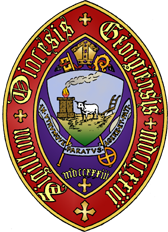Bishop F.F. Reese’s greatest area of expansion in the early part of the 20th century was in creating new African American congregations. He told the diocesan convention in 1910, “My brief experience as a Bishop, ministering to the negroes, has excited in me a much greater degree of sympathy and interest in the Church’s work among them than I felt before.”
He said, “Just in so far as we believe ourselves to be a superior race are we responsible under God to be calm and patient and just and kind,” and then later in the address added, “We cannot, dare not, look God in the face and say we will have nothing to do with it or them.”
 He spoke to the faithful work underway by African American clergy, “Our colored clergy are, I believe, faithful, earnest men. Some of them are exceptional men among their people, men of character and devotion. They are laboring under great difficulties and with poor and inadequate support. They are making bricks with but little straw.”
He spoke to the faithful work underway by African American clergy, “Our colored clergy are, I believe, faithful, earnest men. Some of them are exceptional men among their people, men of character and devotion. They are laboring under great difficulties and with poor and inadequate support. They are making bricks with but little straw.”
When the diocese elected Bishop Reese in 1908, the congregations noted as “colored” in the convention journal comprised one parish and seven missions. The sole African American church among the 14 parishes was St. Stephen’s in Savannah. Among the missions of the Diocese were the African American missions of St. Mary’s in Augusta, St. Athanasius’ in Brunswick, St. Bartholomew’s in Burroughs just south of Savannah, St. Cyprian’s in Darien, Good Shepherd in Pennick, Our Savior in St. Marys, and St. Augustine’s in Savannah.
By 1910, six more missions were started for black Episcopalians: St. John’s in Albany, St. John in the Woods in Inwood near Darien, the two congregations of St. Ignatius’ and St. Perpetua’s on St. Simons Island, St. James in Tarboro, and Good Shepherd in Thomasville. By the end of his episcopacy, he would also start the African American missions of St. Ambrose in Waycross and St. Philip’s in Hawkinsville.
Throughout this time, the congregations met for a separate council for the Colored Churchmen of the Diocese of Georgia. The conventions remained segregated though Bishop Reese’s tenure with separate councils held from 1907 to 1947. In 1911, Bishop Reese told the all white convention of the meeting for black Episcopalians, “every possible opportunity should be given this Council and responsibility laid upon it for the direction of the work among their own people.”
 At this same time debate at the church-wide level focused on two competing plans for expanding work among African Americans. One plan would elect from black clergy some suffragan bishops who served under the bishop diocesan. The second plan would create missionary districts served by blacks bishops who did not report to a diocesan. The Diocese of Georgia preferred raising up a Bishop Suffragans as a report read, “We believe that there is a real necessity and a justifiable demand on the part of the negro Churchmen for authorized leaders of their own race if our Church is to command the allegiance of that Race.” Suffragans would not be given a vote in the House of Bishops or the right to become a diocesan bishop. The same report noted that this was the “only plan by which complete control on the part of the white Bishop of the Diocese can still be maintained.”
At this same time debate at the church-wide level focused on two competing plans for expanding work among African Americans. One plan would elect from black clergy some suffragan bishops who served under the bishop diocesan. The second plan would create missionary districts served by blacks bishops who did not report to a diocesan. The Diocese of Georgia preferred raising up a Bishop Suffragans as a report read, “We believe that there is a real necessity and a justifiable demand on the part of the negro Churchmen for authorized leaders of their own race if our Church is to command the allegiance of that Race.” Suffragans would not be given a vote in the House of Bishops or the right to become a diocesan bishop. The same report noted that this was the “only plan by which complete control on the part of the white Bishop of the Diocese can still be maintained.”
In 1918, the dioceses of Arkansas and North Carolina did elect the first black Episcopal priests to serve as bishops. Many black Episcopalians delighted in seeing African American bishops while many others saw the move as a hollow gesture.
Pictured: St. Athanasius in Brunswick (top); Good Shepherd in Thomasville (bottom).
